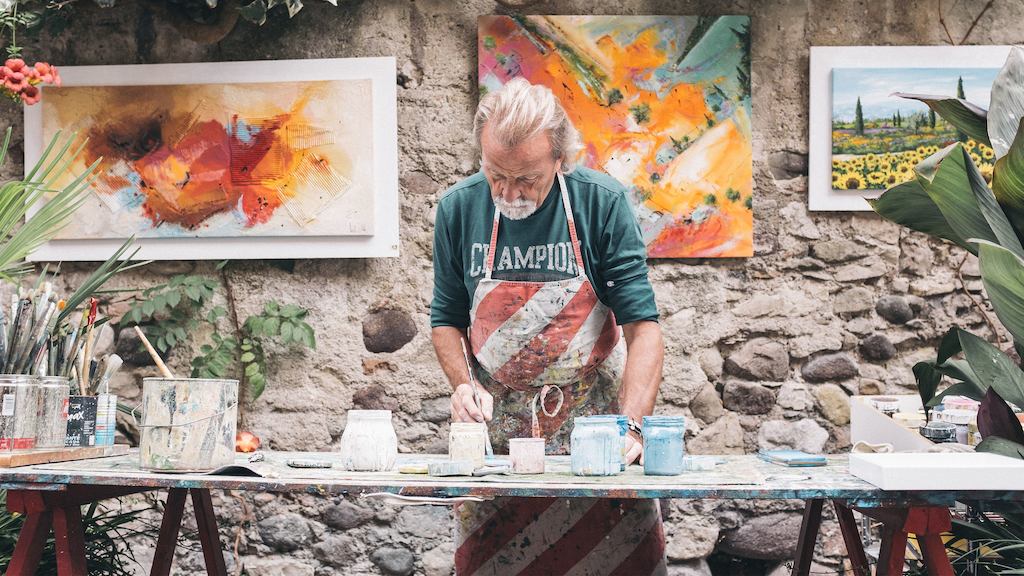According to Age UK’s Index of Wellbeing, based on a new analysis of Understanding Society, creativity is the top factor in whether people are happy in later life.
My mum, Barbara, knows just how important the arts are. She’ll be celebrating her 80th birthday this year and yet she still sings in four choirs and regularly paints with watercolours at home and in a regular class. But it’s her singing that means so much to her. She began singing very early in life when she was at school and it’s been a passion that has stood the test of time. For her, apart from spending time with grandchildren, there is nothing quite as satisfying and uplifting as singing her way through the St Matthew Passion or a Bach cantata surrounded by others who share her passion, and in front of an audience who are marvelling at the beauty of the voices and instruments. You can find out more about the evidence on music and singing on the What Works Wellbeing website.
But of course, singing in a choir is not for everyone, and not everyone finds their passion early on in life, as my mum did.
Some years ago I led some research on the value of arts and health as part of a programme of research called A Lifetime’s Health Delivered Creatively. It evaluated a programme of person centred arts for hospital based stroke survivors and a group based programme of arts for people with depression living in the community. I was deeply affected by the experiences of those who had joined the programmes and impressed by the professionalism of the artists. In fact it inspired me to explore the arts myself – as a participant this time rather than a researcher – and after trying sculpture and drawing I have settled on pottery and ceramics. And it is a wonderful thing.
My experience is shared by people in later life who find that doing something creative adds such positivity and fulfilment to the everyday. People can let go of worries whilst concentrating on shaping clay, drawing, painting, or making music. We can learn and discuss ideas with others. We see what others have done and find ourselves being part of a community with people who share our passion. And for me, like others, there’s the satisfaction that comes when my pieces are done and they are ready to show. It’s an important thread of anticipation and interest that connects one week to the next across the year.
But all that’s pretty hard to measure in ways that seem important to those that fund these activities – does it make you less likely to use NHS resources? The arts are often asked to show what evidence they have for beneficial effects. That challenge is ongoing.
There’s lots of research on the contribution of the arts to health and wellbeing. You only have to check out the National Network for Arts and Health (NNAH) to find out more or take a look at the work of the All Party Parliamentary Group on Arts, Health and Wellbeing. They’re currently running a two-year Arts, Health and Wellbeing Inquiry to raise awareness of the benefits and value of arts for health and wellbeing.
According to the NNAH getting involved in the arts “provides both social and creative outlets for people who are ill – either with physical health issues or mental health issues as well as for people who engage with the arts as a tool to improving their wellbeing.” Arts on Prescription schemes – where GPs prescribe arts and creative activities for participants – are also growing in popularity. They are usually prescribed for people experiencing mental health problems and social isolation. The purpose of the schemes “is not to replace conventional therapies but rather to act as an adjunct, helping people in their recovery through creativity and increasing social engagement.”
But as the many people who already do something creative know, you can’t put a price on such a personal and fulfilling part of life. Taking part in creative activities can help you be happy – it’s a secret that needs to be let out of the bag!



